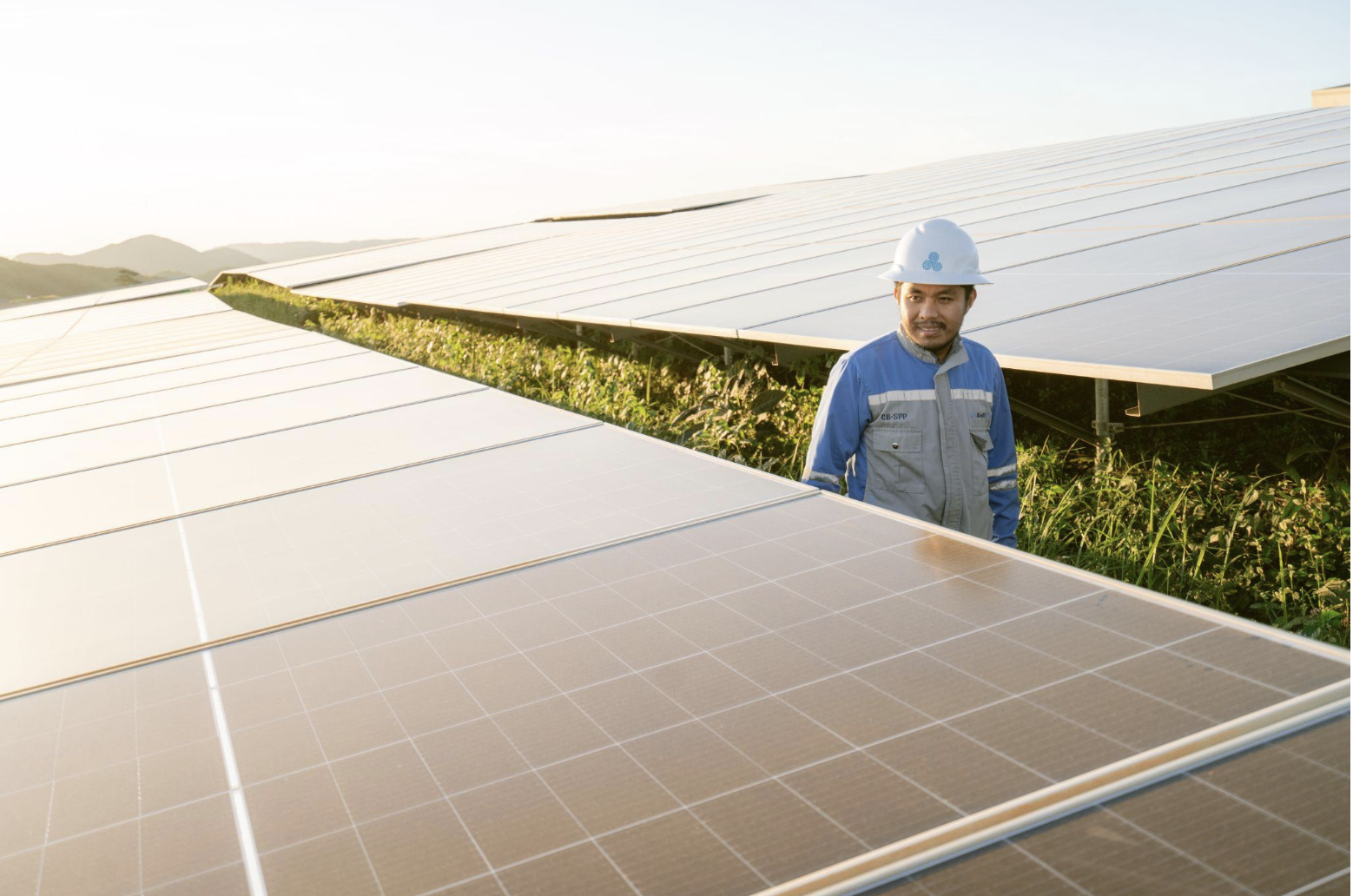The unintended consequence of solar photovoltaic technology

The 94 MWp Cayanga-Bugallon Solar Power Plant in Pangasinan in this photo was built on non-arable sloping ground instead of the usual flat fields used for food production. Such innovations help minimize the displacement of farmers.
MANILA, Philippines – While solar power can be inexhaustible during sunny days, solar facilities require a lot of land, which poses a particular challenge on flat, sunny terrains that are also typically used for farming.
In the Philippines, the growth of solar photovoltaic (PV) technology is projected to take up significant agricultural space. As a rule of thumb, a hectare of land can be used to build a megawatt of solar energy capacity or produce about four metric tons of rice each year.
Amidst this brewing dilemma in land use, ingenuity has emerged in generation companies and service providers looking to expand solar power generation in the Philippines with minimal farmer displacement as much as possible.
Some solar facilities opted to co-locate solar power generation and agriculture on the same land by allowing crops to grow below or beside solar panels. Several have built floating solar, which are solar panels on bodies of water.
A growing number of end-users have also grabbed the opportunity to mount solar panels on their rooftops. At the same time, larger producers have also focused on repurposing non-arable, sloping grounds instead of arable soil.
In particular, the 159-megawatt peak (MWp) Laoag and the 94 MWp Cayanga-Bugallon solar power plants in Pangasinan belong to the category of the latter, as both were built on non-agricultural land and were recently energized to provide additional power to the grid. Both belong to Aboitiz Renewables, Inc., the renewable energy arm of Aboitiz Power Corporation.
While the topography is not the ideal flat surface typical for solar power generation, both facilities are still able to deliver about 200 megawatts of total sellable capacity. Laoag recently started exporting power to the grid, helping elevate the total supply as yellow and red alerts hound the country’s major grids.
As of May 2024, solar energy accounted for 8% of installed capacity and 3.8% of gross electricity generation. With a target of raising renewable energy’s share in the power generation mix from 22% to 50% by 2040 under the Clean Energy Scenario of the Department of Energy (DoE), the installed solar capacity is aimed to populate 39% of the power pie, requiring a growth of 20 times what it is today.
READ: Wind, solar and batteries grow despite economic challenges
According to the DoE, expanding solar’s share to the projected gigawatts will require 46,140 hectares of land, with agricultural flatlands at the risk of being reduced as it is the most viable land for capturing solar radiation. For context, the land area required is equivalent to about 2.86 times the land area of Quezon City, which is the largest city in Metro Manila, and about three-fifths of Singapore.
Comparing land use of energy sources per unit of electricity, a foreign study found that solar PVs installed on-ground uses 19 square meters per megawatt-hour (MWh) when it is made of silicon. For comparison, a gas plant uses just 1 square meter per MWh.
Ultimately, while more solar panels offer a promising solution for clean energy, it is also a potential competition for farmers looking to keep their land. Private developers and policy-makers should take a hard look at the direction of food security amidst the shift to cleaner energy sources.